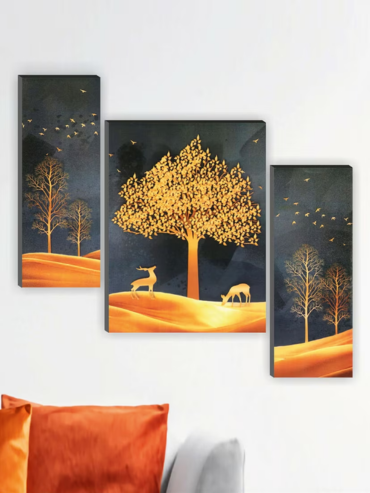Wall Painting
Wall painting, also known as mural art or wall murals, is a form of visual art that is created directly on a wall or ceiling. It has a long history, dating back to ancient times when people adorned the walls of caves with paintings. Today, wall painting has evolved into a diverse and dynamic art form that can be found in various settings, from public spaces to private homes.
Here are some key points about wall painting:
-
Types of Wall Painting:
- Fresco: This technique involves painting directly onto wet plaster, allowing the pigments to be absorbed into the wall. Famous examples include the frescoes of Michelangelo in the Sistine Chapel.
- Mural: Murals can be created using various techniques, including painting directly on the wall, using stencils, or applying pre-printed images to the surface.
-
Settings:
- Public Spaces: Many cities feature large murals on buildings and walls as a form of public art. These can convey cultural, social, or political messages.
- Residential Spaces: Some homeowners choose to decorate their homes with wall paintings, either by commissioning artists or by creating their own DIY murals.
-
Themes and Styles:
- Abstract: Some wall paintings focus on abstract or non-representational designs, using shapes, colors, and textures to convey artistic expression.
- Realistic: Others may depict realistic scenes, landscapes, or portraits.
- Street Art: In urban settings, street art often includes a variety of styles, such as graffiti and stencil art, contributing to the visual character of neighborhoods.
-
Process:
- Preparation: Artists often start with a sketch or design before beginning the actual painting.
- Execution: Depending on the technique, the artist may use brushes, rollers, spray paint, or other tools to apply the paint to the wall.
-
Preservation and Conservation:
- In some cases, efforts are made to preserve wall paintings, especially those with historical or cultural significance.
- Environmental factors, such as weather and pollution, can pose challenges to the preservation of outdoor murals.
-
Legal and Ethical Considerations:
- In urban areas, there can be debates about the legality of street art and murals. Some cities embrace street art as a form of cultural expression, while others may view it as vandalism.
Whether as a form of artistic expression, a means of communication, or a decorative element, wall painting continues to play a significant role in the world of art and design.
